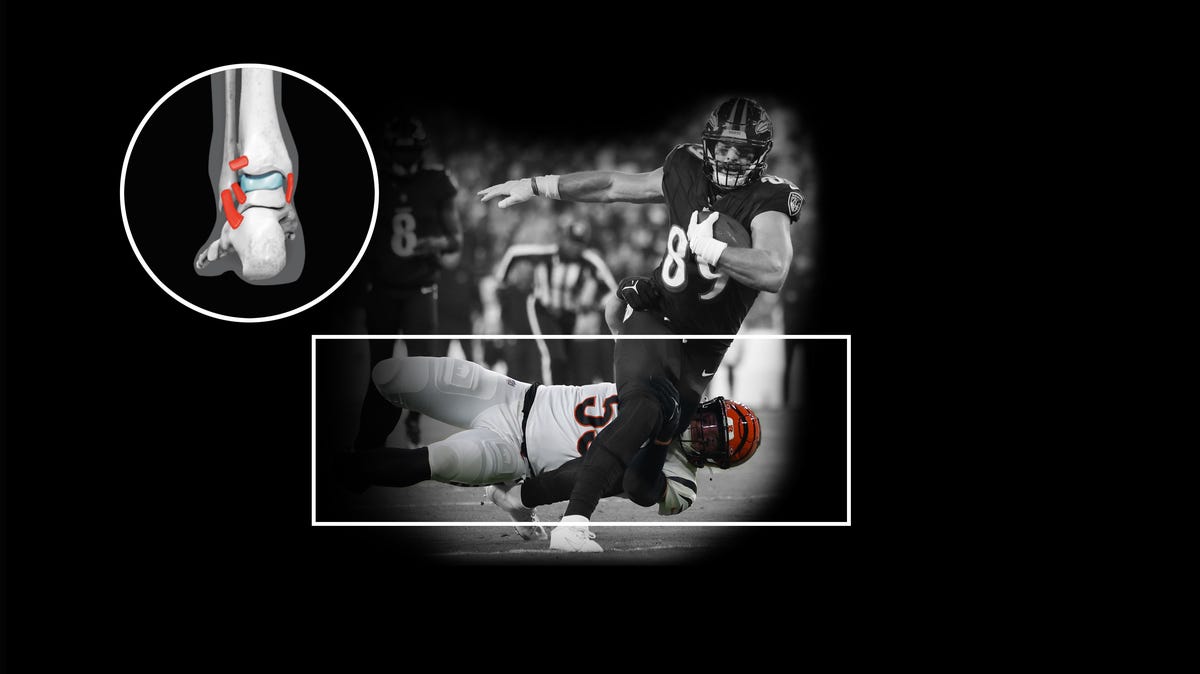What is a hip-drop tackle? Understanding why this move is prohibited for the NFL 2024 season.
This disputed tackling method, which injured Mark Andrews of the Baltimore Ravens, has been referred to as the ‘cousin of the horse collar tackle.’
Fans of the NFL may have noticed some changes during the preseason games this year. These alterations reflect the league’s ongoing commitment to enhancing player safety:
◾ Guardian caps, optional protective coverings for helmets intended to reduce impact
◾ A new kick-off rule aimed at minimizing high-speed collisions between players
◾ A prohibition on the hip-drop tackle, which poses a significantly higher injury risk compared to conventional tackles.
Next Thursday, the NFL season will officially begin, featuring the Baltimore Ravens squaring off against the Kansas City Chiefs (8:20 ET, NBC). This event will include Mark Andrews, a player who was injured by the now-banned hip-drop tackle. On Nov. 16, he suffered a cracked fibula while being tackled from behind, causing him to miss 10 weeks.
What is a hip-drop tackle?
A hip-drop tackle occurs when a defensive player approaches from the back or side, wraps their arms around the offensive player, and then drops their weight onto the ground, often landing on the offensive player’s legs. NFL executive Jeff Miller states that this type of tackle carries a 25 times greater risk of injury than traditional tackles.
Rich McKay, the chairman of the NFL’s competition committee, refers to the hip-drop tackle as akin to a horse-collar tackle: “In a hip-drop tackle, the defender wraps around the player and then swings their weight down on the side of their leg, potentially affecting an ankle or knee.”
“This is a particularly dangerous move,” explained Dr. Robert Glatter, a former sideline physician for the New York Jets and an assistant professor of emergency medicine at Lenox Hill Hospital, Northwell Health in New York. “The defender’s body weight comes down hard on the ankle, leg, or knee, elevating the risk for significant damage to the ankle and ligaments.”
Concerns have been raised by some players and the NFL Players Association that the hip-drop tackle is vaguely defined, which may lead to subjective interpretations by referees.
“It’s a move that could undermine the game on various levels,” said Austin Ekeler of the Washington Commanders, who serves as vice president on the union’s leadership team, during Super Bowl week.
How was Mark Andrews injured during a hip-drop tackle?
The hip-drop tackle was responsible for sidelining Ravens tight end Mark Andrews last season. The injury happened early in the first quarter on Nov. 16 when he was tackled from behind by Bengals linebacker Logan Wilson.
As a result, Andrews cracked his fibula and sustained ligament damage to his right ankle but remarkably returned to action on Jan. 28 after 10 weeks of recovery.
Ankle fractures can be categorized into three main types as per the Danis-Weber classification system:
Other significant injuries caused by hip-drop tackles
In Week 4 of the previous season, Seattle Seahawks quarterback Geno Smith experienced a knee injury during a Monday night game due to a hip-drop tackle by Isaiah Simmons. Ironically, after the play, referees penalized Smith for a personal foul when he got into altercation with Simmons.
“That was a dirty play,” Smith commented to ESPN’s Lisa Salters after the game. “Such moves have no place in this sport. Luckily, I was able to return to play, thanks to some divine intervention.”
Other notable injuries attributed to hip-drop tackles include:
- Cowboys running back Tony Pollard fractured his leg and ankle in January, which led to him being sidelined during an NFC divisional playoff game against San Francisco.
- Kansas City Chiefs’ star quarterback Patrick Mahomes suffered a high ankle sprain during the same playoff weekend. While it was a serious injury, it could have been worse. “A high ankle sprain or injuries to ligaments above the ankle can occur with such tackles, and associated fractures of the fibula can happen due to rotational or twisting injuries,” Glatter explained.
During NFL meetings in New York last October, Jeff Miller asserted that the incidence of injuries related to hip-drop tackles is now 25 times more frequent than with regular tackles, an increase from the “20 times more” statistic cited previously by NFL executive vice president Troy Vincent in spring.
Recent regulations crafted to safeguard players
The introduction of a ban on hip-drop tackles marks just one of several measures the NFL has implemented to address risky defensive actions. Some notable past rules include:
Horse-collar tackle: Following the 2005 off-season, NFL owners voted to prohibit the action where a defender grabs the inner collar of an offensive player’s shoulder pads or jersey, pulling them down. This type of tackle can lead to serious injuries such as ligament tears and fractures of the tibia and fibula. Additional rules regarding this tackle include:
- It does not apply to a ball carrier within the tackle box or a quarterback still in the pocket.
- It’s not necessary for a player to be brought to the ground for a tackle to be deemed illegal. If a player’s knees give way due to the tackle, it is considered a foul.
Helmet to helmet: In 2018, the league introduced a rule that prohibits players from lowering their heads and making aggressive contact using their helmets. This penalty can occur anywhere on the field, and in certain cases, the offending player may be disqualified.
Contributing: Jarrett Bell

